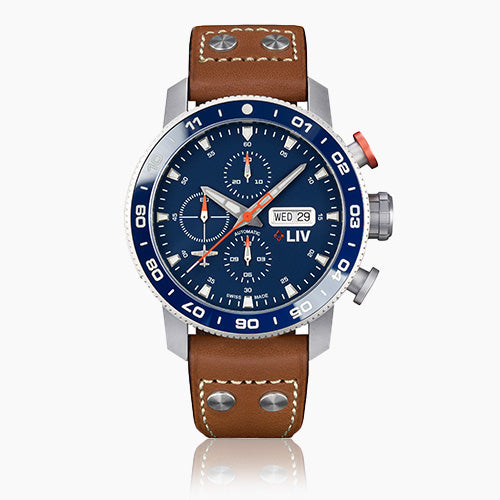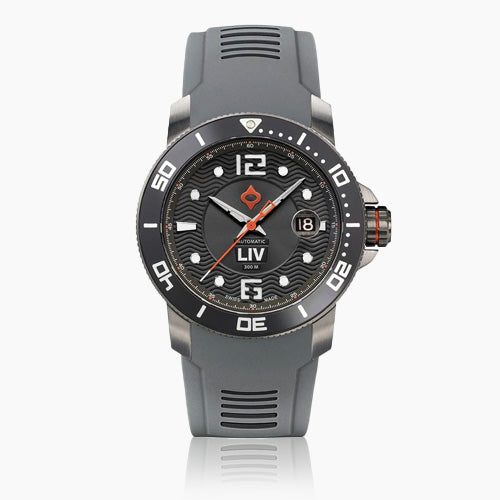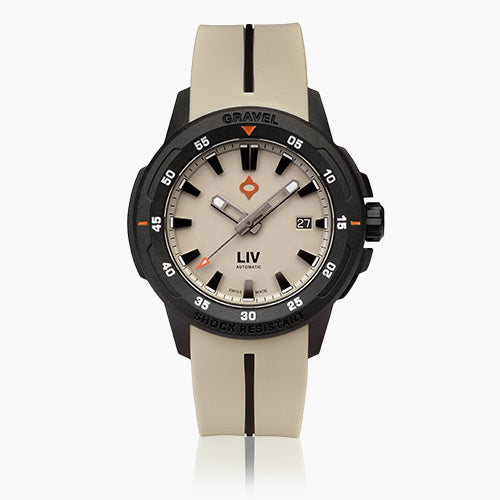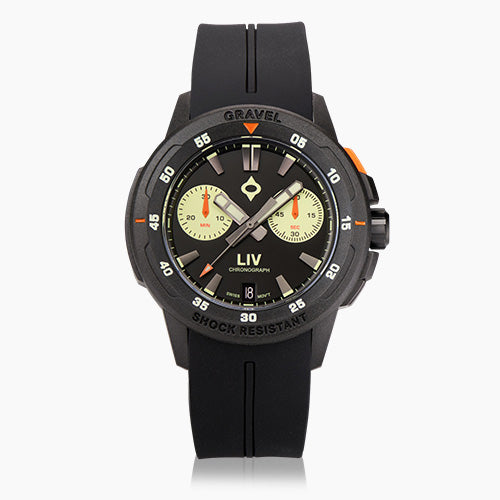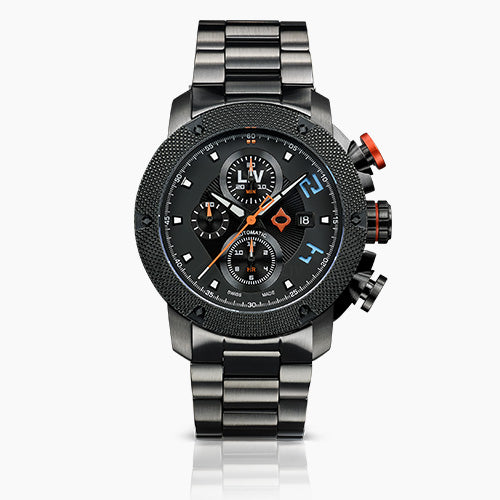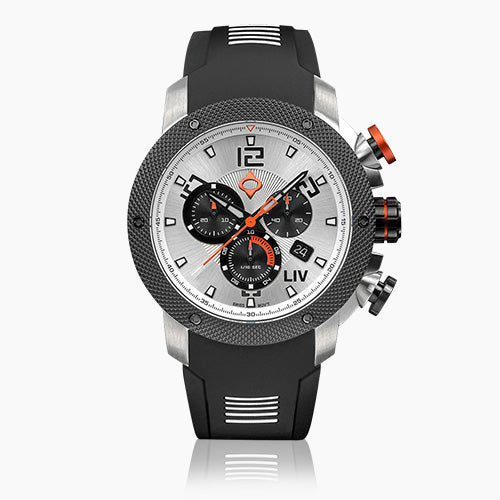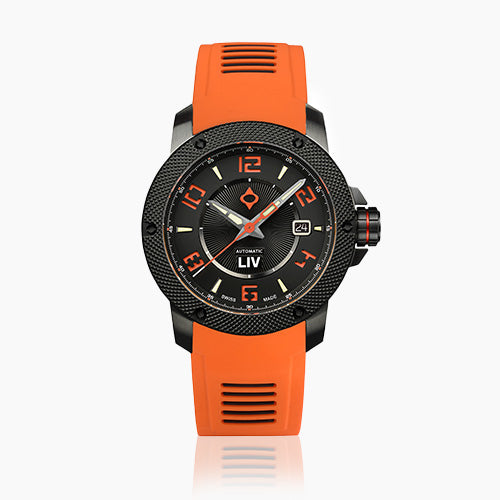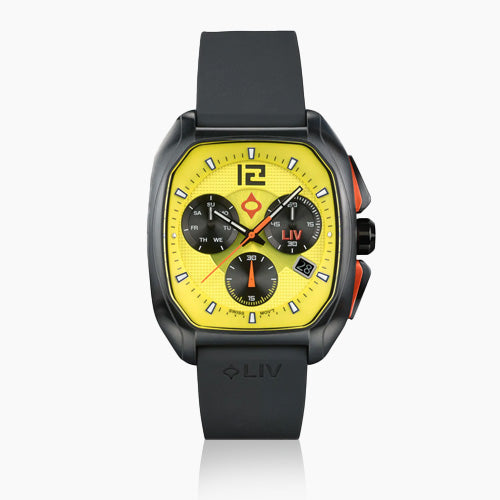
8 Things You Didn't Know About Quartz
Share
8 THINGS YOU DIDN'T KNOW ABOUT QUARTZ
More than just a killer Scrabble word, quartz happens to be one of the most abundant and useful minerals on the planet. You’ll find quartz in your:
- Watch Movements
- Granite countertops
- Televisions and monitors
- Windows
- Smartphone
- Favorite sandy beach
- Local metaphysical supply shop
It’s also a part of what keeps your watch accurate. But what is quartz, and what does it have to do with telling time?
1. IT'S EVERYWHERE
Quartz is a mineral composed of silica dioxide. In its purest form, quartz (also known as rock crystal) is a smooth, clear stone, but various impurities in quartz create other colors:
- Rose quartz
- Smoky quartz
- And as other gemstones;
- amethyst
- citrine
- agate
and my personal favorite, the Herkimer diamond. It’s a component of many less glamorous types of rock and is also commonly the main ingredient in sand, which is used in the manufacturing of glass. Quartz is:
- durable
- heat- and chemical-resistant
- makes an excellent abrasive material for use in sanding.
But its versatility doesn’t stop there. Quartz features some unique properties that make it an ideal material for use in precision electronic equipment like radios, pressure gauges, optics and lenses, and--yes--as the movement inside clocks and watches.

EXPLORE THE LIV REBEL- DDC Forest Green
2. IT'S ELECTRIC
Well, quartz is piezoelectric, to be more correct. This means that it produces an electrical current when mechanical stress is applied to it. What’s mechanical stress? A force, such as from bending, or an electric charge, such as the one from a battery. See where this is going?
When stressed, quartz emits a frequency. Don't we all? The frequency is highly stable, a desirable quality when it comes to keeping time or broadcasting signals via radio waves. In simple terms, a quartz watch functions like this:
In today’s quartz movement watches and other electronics, that sliver is typically made from synthetic quartz, which tends to be smoother and more uniform than naturally-occurring quartz and is cut to a precise shape to optimize the frequency.
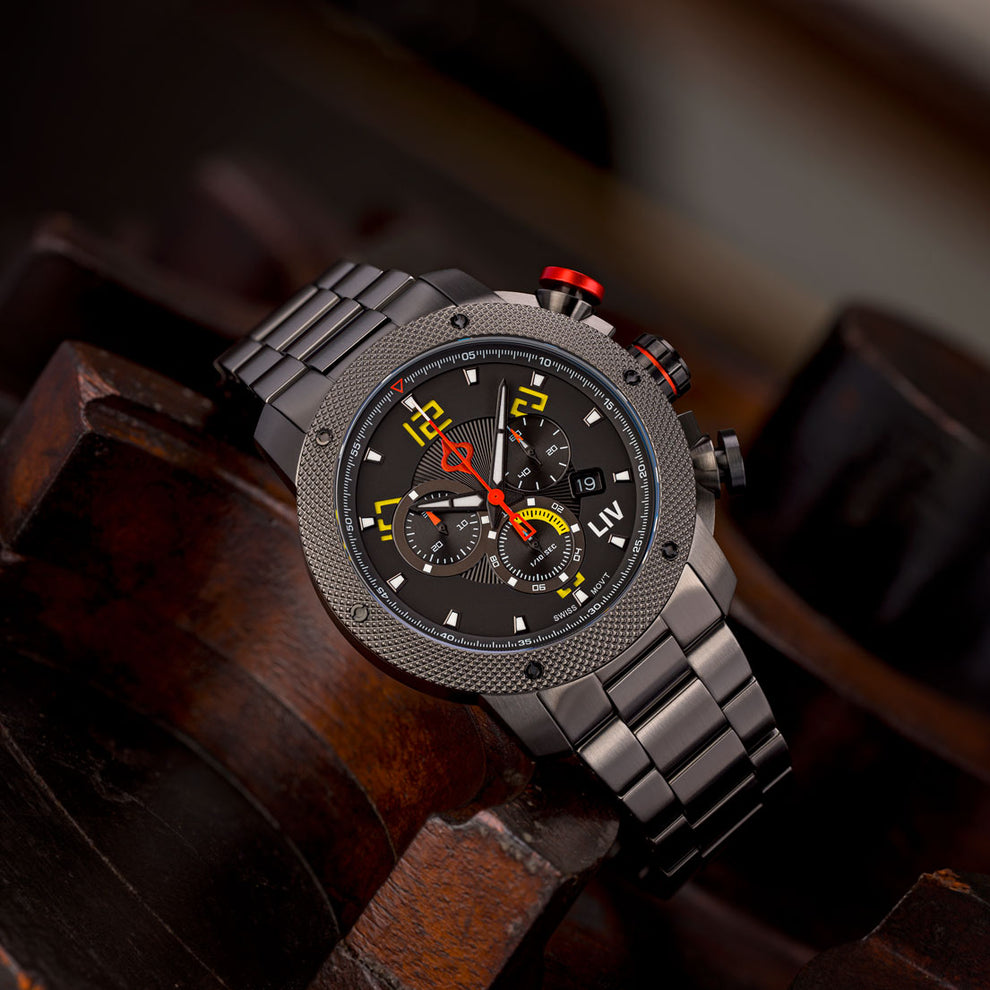
EXPLORE THE LIV GX1 Venom Yellow
3. IT'S ACCURATE
Quartz watches are more accurate than their mechanical counterparts. While mechanical and automatic watches built today are accurate enough, gaining or losing a few seconds per day, a quartz watch can remain accurate within a few seconds per year. A few seconds a day might not seem like much but consider this: a difference of five seconds per day could equal a full half-hour during that year.
Now for even more science. If you’re wondering whether a quartz watch is the most accurate timepiece there is, the answer is not quite. How about another science factoid? The National Institute of Science and Technology’s (NIST) new atomic clock is so precise scientists have to come up with a new method of measuring gravity to use all its capabilities! Wrist-sized models are not expected to be available, ever.
4. IT'S RELIABLE AND DEAD SIMPLE TO USE
Why are quartz watches so popular?
- Battery powered so no need for winding
- Extremely accurate
- Offer amazing complications
- Set-and-forget timepiece
- More affordable than mechanical movements
Where is going? If you’d prefer to set your watch the day you receive it and never think about its inner workings again, a quartz watch is a timepiece for you. It also has a fraction of the moving pieces than a watch with gears and springs contains, meaning fewer things that can malfunction. If that isn’t the definition of reliable, what is?

EXPLORE THE LIV GX Alarm Type-D Black Cobalt
5. IT'S (RELATIVELY) NEW
Although quartz itself is as old as time, think billions of years, its use in time-keeping is much more recent. All timepieces function with an oscillator, that is, an object which, through its continuous, unvarying motion, “tells” a clock or watch how much time has passed.
The oscillator in a grandfather clock isn’t a quartz movement, of course, but a pendulum, which swings back and forth due to the gravitational pull being exerted on it. Pretty cool, and cool-looking, but not very practical for that guy or gal on the go. Wonder how TSA would react to travelers with a grandfather clock for a timepiece.
THE JAPANESE REVOLUTION
The first quartz watch was created in 1969 by Japanese manufacturer Seiko. Known as the Astron, this watch was a gold-case limited-edition style with quartz movement technology. It was slick and convenient--but prohibitively expensive. The Astron cost roughly the same as a small car at the time. Therefore, it didn’t instantly set the watch industry on fire.
Japan took the lead in the watch world, leaving Switzerland, a nation so synonymous with watching making that mechanical watches constituted its third largest international export industry, in dire straits. By the early 1980s, the industry was forever altered.
6. QUARTZ WASN'T AN OVERNIGHT SENSATION
The quartz movement started to take off in the 1970s with the invention of digital watches. Featuring LCD or LED screens, these new movements featured no moving parts at all and provided a bold, illuminated, and easy-to-read face.
Technology and economies of scale play their part
Eventually, manufacturing technology improved, and prices dropped, which in turn made quartz movements the oscillator of choice in analog watches for most consumers. The opportunity to wear a watch was transformed by the profound reduction in price made possible by quartz movements. Once a status symbol requiring a small fortune, watches became casual accessories that anyone could afford.
A SWISS DISASTER AVERTED
A consortium of Swiss banks was forced to bail out that nation’s watch manufacturers after demand for mechanical movements plunged seemingly overnight. Ultimately, though, the story of Swiss watchmaking has a happy ending; the ubiquitous Swatch watch was created in direct response to the “quartz crisis” and put Switzerland back on top.
7. IT MAKES YOUR WATCH TICK -- LITERALLY
If you’ve ever wondered why the second-hand moves in jumpy little movements on some watches and sweeps gracefully and continuously on others, you may be interested in learning that the “ticking” watches are invariably quartz-powered.
Helpful hint: If you are looking to purchase a mechanical watch, be wary of anyone trying to sell you on that it ticks. Especially out of an alley or the back of a truck.
8. IT'S THE MOST POPULAR TYPE OF WATCH
Today, quartz movement watches make up 90% of the market, but mechanical watches have developed something of a cult following for these reasons:
- Heritage and horological history
- Craftsmanship
- Long life
Here's a fun fact: Airline pilots often prefer mechanical watches because there is no battery to fail while the aircraft is in flight.
THE BOTTOM LINE
So, as you can see, this lightweight, versatile material is known as quartz has the power to keep things running and running on time. The choice between a quartz watch and a mechanical or automatic watch comes down to your personal preference.
Fortunately, there is no wrong choice here. A mechanical watch may be like a work of art inside, but a quartz watch is versatile, lightweight, more affordable, and more straightforward to use.
With the right attention to design, both types can look and feel great. And the next time you find yourself with a Q and a Z on your Scrabble rack, look no further than your wrist for inspiration.
